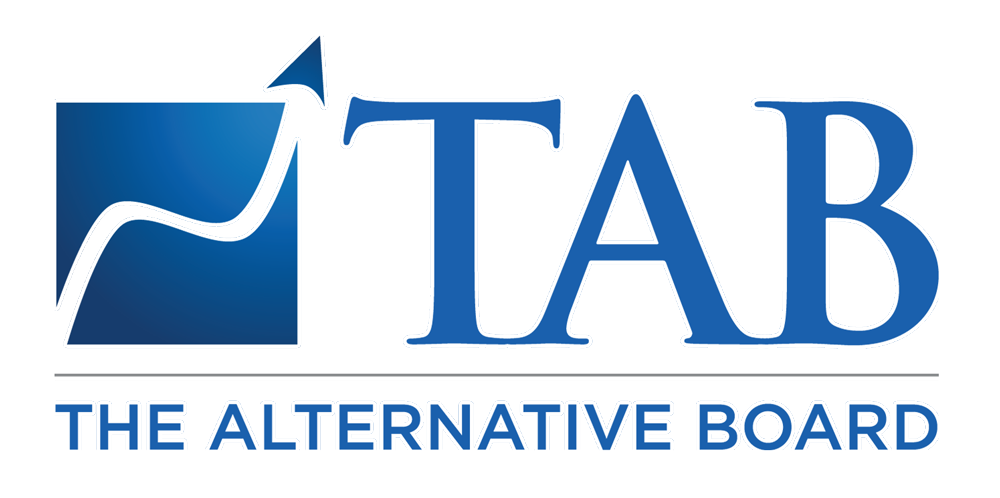A Strategic Plan is Your Map to Future Success
Managing a business without a strategic plan is much like taking a trip in your car without a map. You may end up driving a lot without ever reaching your destination. In business, a strategic plan is your map. It serves as a powerful tool to help direct your activities to achieve your business and personal goals.
Yet many small business owners struggle with strategic planning, often citing they don’t have the time, knowledge or resources to create an effective plan. TAB CNJ (The Alternative Board™ of Central New Jersey) can help.
TAB CNJ provides a structured, professionally-led planning process. TAB CNJ members also have access to a peer-advisory board who provide valuable ideas, insights and honest feedback to help you create a strategic plan that will move you from where you are today to where you want to be in the future.
Planning is Fundamental
Strategic planning is a fundamental component at TAB. TAB members engage in planning exercises in the fourth quarter every year so that as the new year starts, they have a strategic plan in place. These plans help business owners achieve their goals rather than putting them off and making excuses for not meeting them.
Creating an effective strategic plan is a four-part process that includes:
Preparing
Prioritizing and Creating the Plan
Communicating the Plan
Implementing, Measuring, and Rewarding
In this four-part series, we’ll look at the four components of strategic planning and provide tips on how to create a plan that helps you achieve your goals.
STEP 1: PREPARE
The first step to any successful strategic plan is to gather information and determine your company’s strengths and weaknesses. To do this, conduct a SWOT analysis of the internal and external factors impacting your business and what the implications are to your company and your long-term goals.
A SWOT analysis is an assessment of your company’s Strengths, Weaknesses, Opportunities and Threats. It’s a great way to quickly identify the things that can move the needle on your business.
SWOT Analysis Components
Your Strengths
Strengths are internal factors your company does well. Strengths can include superior or unique products or services, proprietary technology, a low-cost manufacturing process, and other competitive advantages your company may have.
Your Weaknesses
Weaknesses are internal issues that may be keeping your company from achieving better results. While it may be difficult, honestly assess the weaknesses in your company. They can include outdated products or services, excessive waste in manufacturing, distribution issues, quality problems or other issues.
Opportunities
Opportunities are external factors that offer the potential for company growth. They include growing markets and new markets, emerging market trends that favor your product or service, and technological innovations.
Threats
Threats are external influences that can have a negative impact on your business. Threats can include new products or services entering the market that compete with what you offer, shrinking markets, increasing costs for raw materials and other factors.
Whiteboard Exercises
An effective way to conduct a SWOT analysis is to conduct a whiteboard session with key members of your staff. Encourage honest, constructive dialog. Listing the different SWOT components on the whiteboard allows everyone to engage in the process and visually see how the different components interact.
Support and Insights from TAB Members
As a TAB CNJ member, you’ll never have to develop a strategic plan on your own. You’ll have access to a structured, proven strategic planning method led by a trained business coach.
You’ll also benefit from your peer advisory board that brings together like-minded business owners from a variety of industries who share their knowledge and expertise with the goal of helping each other’s businesses thrive. In an atmosphere of mutual respect and trust, members can be honest about their opportunities and challenges and receive constructive and growth-oriented feedback.
At the end of the process, you’ll have a workable strategic plan that provides a solid path to meet your needs and goals.
Here’s what some TAB members have to say about the benefits they get from TAB’s strategic planning process:
A member who owns a distribution company with other family members reports he finds TAB’s annual planning process helpful because “My plan is in my head. I know what I want to achieve, but the process forces me to get granular and then communicate the plan to all the people at the company who can’t read my mind.”
Another member who owns an insurance company said she tapes her strategic goals list to the wall of her office because she has a tendency to be pulled into the day-to-day tasks of running her business. The list prompts her to make time each day to work on the bigger picture and the strategic goals that she has set for the business.
TAB Benefits
TAB offers busy entrepreneurs a powerful, streamlined program that includes peer advisory boards, one-on-one coaching, workshops, expert speakers, robust business tools, and invaluable TAB connections. TAB provides valuable resources that help business owners and leaders navigate difficult business conditions, discover new opportunities, and achieve their strategic goals.
During times of economic uncertainty, having access to fresh perspectives, expertise, and support when facing big decisions is not a luxury — it’s a necessity.
Up Next: Prioritizing and Creating the Plan

